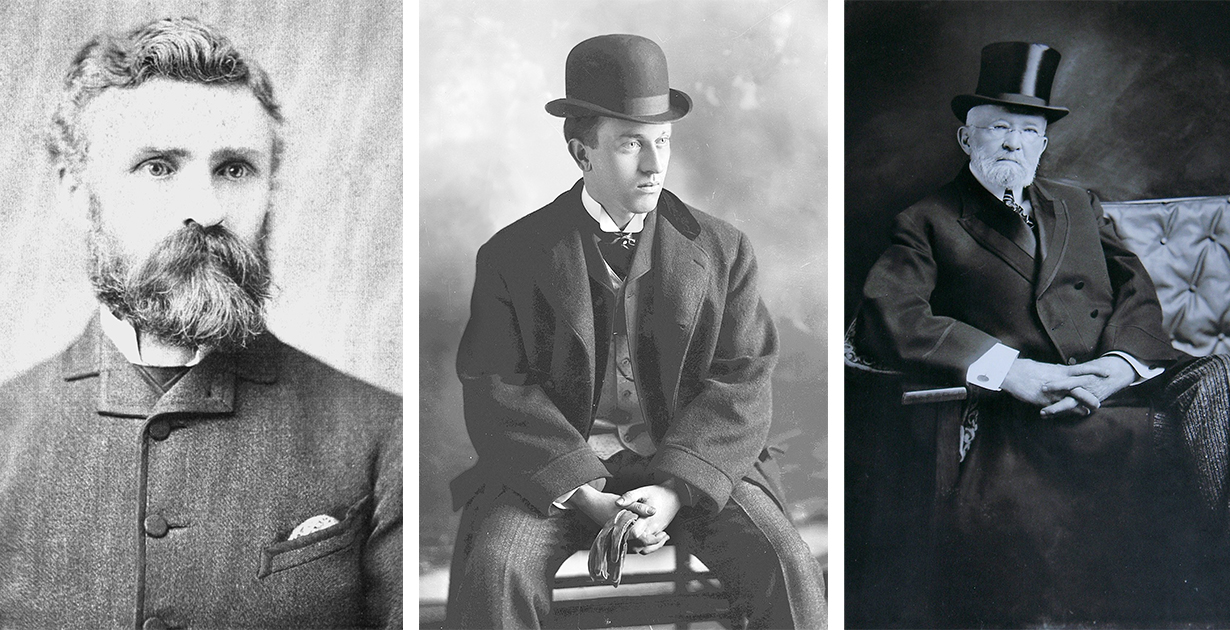Buffalo Trace is one of the largest spirits producers in the USA, churning out 2,650,000 US gallons of whiskey per year. Some of the most popular whiskey brands in the world are produced there such as Eagle Rare, George T. Stagg, and W.L. Weller, as well as the eponymous Buffalo Trace Bourbon.
The distillery and brand are widely successful, and the company has a long and interesting history filled with famous bourbon names, tornados, and…bison.
Here are five things you didn’t know about Buffalo Trace.
1. Buffalo Trace claims to be the oldest continuously working distillery in the United States
The earliest record of distilling on the site of the Buffalo Trace Distillery dates back to 1775. Brothers Hancock and Willis Lee established Leestown, Kentucky, just north of Frankfort. This is now the site of the Buffalo Trace distillery.
Despite this claim, numerous other distilleries in the US claim to be the oldest. The Burks’ Distillery – which produces Maker’s Mark – is officially recognized in the Guinness Book of World Records as the oldest bourbon distillery in the world, with its history dating back to 1773.
However, the Burk’s Distillery was not ‘continuously working’ throughout its lifetime. Buffalo Trace, on the other hand, remained operational even during prohibition under the guise of producing whiskey for medicinal purposes.
2. The ‘Buffalo Trace’ was an historic migration trackway

The distillery is named after a trackway that ran through Kentucky, Indiana, and Illinois. The trackway was used by bison that migrated from Kentucky to Illinois. It was subsequently used by Native Americans and, later, European settlers in British America as a travel route.
The Buffalo Trace was 12-20 feet wide in places, due to the mass of bison that had forged the route over centuries of migration. As such, it became one of the first easily passable routes in America.
You will notice that the Trace was made by bison, not buffalo. The Trace has had numerous other names over the years, including the most commonly used ‘Vincennes Trace’.
3. The distillery has had a few different names over the years
Despite being continuously working for over 200 years, the Buffalo Trace distillery has worked under many different names.
When the first notable purchase of the distillery was made in 1870 by Colonel Edmund Haynes Taylor, Jr. it was christened the Old Fire Copper Distillery (O.F.C). E.H. Taylor believed that the best whiskey was produced in wood-fired copper stills, and this was a belief that he put into practice at the site.
In 1878, the O.F.C Distillery was purchased by George T. Stagg, who subsequently changed the name to the George T. Stagg Distillery in 1904. Then, in 1999 under the ownership of the Sazerac Company, the distillery was renamed Buffalo Trace.
4. Buffalo Trace Distillery has been subject to natural disasters

In 1882, the then-O.F.C Distillery was struck by lightning, with a significantly large part of the distillery burned to the ground, George T. Stagg set about rebuilding. The eventual cost was $44,000 above what was collected from the insurance policy. The distillery was built on a much larger and grander scale.
Then, in April 2006, a tornado almost completely destroyed one of the warehouses at Buffalo Trace. Thousands of the barrels that were housed inside were left exposed to the elements before clean-up work could be started.
However, rather than despair over the disaster, Buffalo Trace decided to use the tornado to create a unique expression. The barrels, having been exposed to the air throughout late spring and summer whilst repair work was being done, had given the whiskeys inside a unique and rich bourbon profile. The E.H. Taylor, Jr. Warehouse C Tornado Surviving Bourbon was released in 2011 and is billed as the “one and only” such expression.
5. Many famous bourbon names worked at Buffalo Trace
You will have noticed some famous names in the article so far. Many of the biggest names in the bourbon industry have spent time at the Buffalo Trace Distillery.
This includes Colonel Edmund Haynes Taylor, Jr. who purchased the distillery in 1870 and began modernizing and expanding operations at the distillery. His traditional distilling practices combined with innovative fermentation methods created a high-quality bourbon that put O.F.C on the map. Today, E.H. Taylor, Jr. is remembered as the “Father of the Modern Bourbon” industry. Many expressions have been named in his honor.
George T. Stagg purchased the distillery from the Colonel in 1878. The two worked together to manage finances and operations and created a formidable distillery with fine-quality products and a large following.

Albert Bacon Blanton was another who got their start at Buffalo Trace. Back when the distillery was named the O.F.C Distillery, a 16 year old Blanton came to the distillery looking for work. What followed was a prosperous 60-year career, during which Blanton steered the company through the repeal of prohibition, the Great Depression, and World War II.
Elmer T. Lee joined the distillery under Albert Bacon Blanton in 1949. During his first few years of work, he was mentored by Blanton, who shaped his understanding of the industry. In 1984, just before he was due to retire, Lee pioneered the first single-barrel bourbon to be marketed in the United States and named it after his former boss. Today Blanton’s bourbon is one of the most popular single barrel bourbon brands in the USA.










